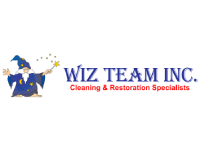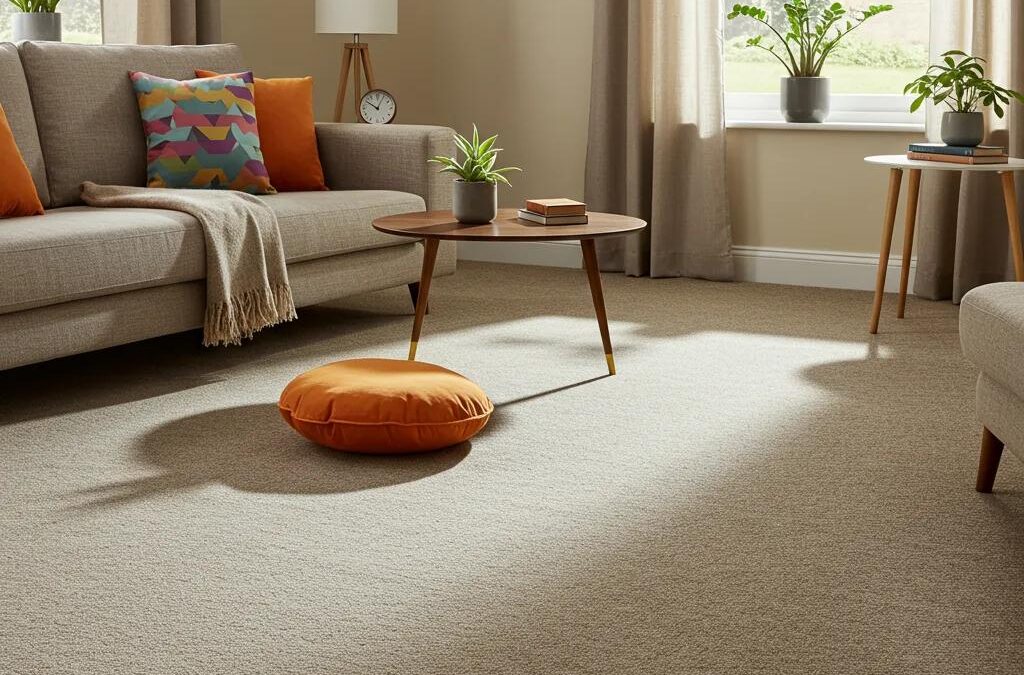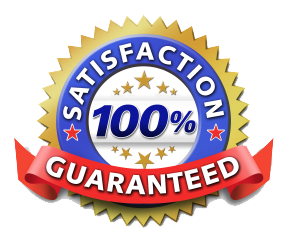Professional area rug cleaning transforms tired, stained carpets into fresh, durable center pieces that protect fiber integrity, enhance indoor air quality and extend lifespan. With up to 80 percent of household allergens lodging in rug piles, expert cleaning delivers targeted stain removal, deep soil extraction and eco-friendly treatments to safeguard both health and appearance. This guide covers the key benefits of professional cleaning, material-specific care for Oriental, wool, silk and synthetic rugs, leading cleaning methods, stain-and-odor solutions, local expertise in Lake Forest, recommended service frequency, transparent pricing and maintenance strategies. Readers will gain a clear roadmap to pristine, long-lasting rugs underpinned by certified technicians and advanced techniques.
What Are the Benefits of Professional Area Rug Cleaning?
Professional area rug cleaning uses specialised equipment and industry-tested solutions to remove embedded soil, stains and allergens.
By balancing pH-stable detergents with controlled moisture, certified technicians preserve fiber strength while restoring vibrant colors and improving air quality.
For example, deep cleaning can remove 95 percent of dust mites hidden in Persian rug fringes, reducing allergy symptoms and extending the rug’s usable life.
How Does Professional Cleaning Protect Your Rug’s Integrity?
Professional cleaning protects rug integrity by adjusting water temperature and cleaning pressure to each fiber type. High-end truck-mounted steam systems cycle heated water and suction at precisely 120 °F, loosening dirt without over-wetting. Preserving original dyes and backing materials prevents delamination, ensuring Oriental and hand-knotted rugs remain structurally sound and fade-resistant even after multiple cleanings.
Why Is Expert Stain Removal Essential for Area Rugs?
Expert stain removal targets discoloration with enzyme or solvent-based pre-treatments that break down organic and synthetic spills at the molecular level.
Before tackling a red wine mark, technicians apply a color-safe oxidizer to lift pigments without bleaching fibers. This approach restores appearance quickly and prevents long-term dye migration that can weaken yarns and distort patterns.
How Does Professional Cleaning Improve Indoor Air Quality?
Professional cleaning improves indoor air quality by extracting allergens, pollen and dust trapped deep in pile.
Powerful suction removes up to 90 percent of airborne particulates that accumulate in rug backing.
Eliminating these irritants reduces sneezing, respiratory issues and pet-related odours, creating a healthier living space and supporting allergy-sensitive households.
Which Area Rug Types Require Specialised Cleaning?
Different rug materials demand tailored cleaning protocols to avoid damage. Sensitive fibers such as silk and antique wool require low-moisture or dry-cleaning methods, while synthetic blends tolerate higher temperatures for deep sanitization. Understanding each rug’s weave and fiber composition ensures optimal results without compromising softness or dye stability.
How to Clean Oriental and Persian Rugs Safely?
Oriental and Persian rugs feature natural dyes and complex hand-knotted structures that benefit from immersion cleaning.
Technicians gently submerge these rugs in a neutral-pH cleaning bath, agitate by hand to release soil, then rinse with filtered water.
Air-drying on elevated racks prevents mildew and preserves fringe alignment, retaining carpet artistry and fiber resilience.
Disinfection, Cleaning, and Drying of Contaminated Oriental Rugs : Oriental rugs contaminated with Category 3 floodwater may harbor environmental bacteria known to be human pathogens. River water inoculated with three species of Gram-positive and Gram-negative environmental bacteria (Escherichia coli, Enterococcus faecalis, Pseudomonas aeruginosa) was used to assess the effectiveness of disinfectant type, cleaning methodology, and drying practices by examining bacterial survival rates. Rug sections were immersed for one hour in contaminated water, saturated in one of three EPA-registered disinfectant products (Phenol, Quaternary chloride, and Thyme oil) or tap water as a control, followed by cleaning and drying. The results showed that all disinfectants reduced the overall microbial load better than tap water. Two applications of disinfectants were slightly more effective than one application, which, in combination with drying within 24 hours or less, produced an effect that notably reduced microbial counts. These results provide in-The Effect of Disinfectants, Cleaning, and Drying Practices on Oriental Rugs Flooded with Contaminated River Water: Public Health and Policy Implications.
What Are the Best Methods for Wool Rug Cleaning?
Wool rugs contain lanolin, a natural oil that repels dirt and adds sheen. Controlled moisture cleaning with wool-safe detergents maintains lanolin levels while removing grime.
High-efficiency extraction vacuums reduce drying time to under four hours, preventing matting and protecting fiber elasticity for decades of wear.
How Are Antique and Silk Rugs Professionally Maintained?
Antique and silk rugs undergo low-moisture or solvent-based dry cleaning to prevent shrinkage and dye bleeding.
A certified technician applies absorbent cleaning powder, works it into the pile, then vacuums thoroughly. This method safeguards fragile silk threads and delicate antique backings, preserving historical value and tactile softness.
Can Synthetic and Natural Fiber Rugs Be Cleaned Effectively?
Yes, both synthetic and natural fiber rugs respond well to professional cleaning when treated appropriately. Synthetic polypropylene or nylon tolerates higher water pressure, allowing deep extraction of oil-based stains.
Conversely, natural jute and sisal require minimal moisture and quick-dry techniques to avoid fiber swelling, ensuring structural integrity and color fastness.
What Are the Most Effective Area Rug Cleaning Methods?
Choosing the right cleaning method depends on fabric, soiling level and urgency. Steam cleaning, hot water extraction and dry cleaning each offer unique advantages for deep soil removal, stain treatment and fast turnaround. Match the process to rug type for superior results and fiber protection.
How Does Steam Cleaning Work for Area Rugs?
Steam cleaning injects heated water and detergent under high pressure into rug fibers, then instantly extracts moisture and soil. This method disinfects surfaces, dissolves grease and lifts embedded dirt without leaving residue.
Steam cleaning delivers a 30-minute deep-clean cycle for moderate soiling, making it ideal for busy homes.
Comparison of Cleaning Methods
| Method | Water Usage | Drying Time | Ideal Rug Types |
|---|---|---|---|
| Steam Cleaning | Medium (3–5 L) | 4–6 hours | Wool, synthetic, low-pile rugs |
| Hot Water Extraction | High (8–12 L) | 6–8 hours | Heavy-soiled, polypropylene, cotton |
| Dry Cleaning Powder | Minimal (<0.5 L) | 1–2 hours | Silk, antique, natural fiber carpets |
What Is Hot Water Extraction and When Is It Used?
Hot water extraction uses pressurised hot water infused with eco-friendly detergents to dissolve deep-seated soil. After a dwell time, high-powered vacuums remove water, leaving surfaces sanitised. It’s the preferred choice for heavily soiled rugs in commercial settings or homes with pets and high foot traffic.
When Is Dry Cleaning Preferred for Area Rugs?
Dry cleaning is preferred when water-sensitive fiber—such as antique silk or jute—risk distortion. A non-aqueous cleaning compound absorbs oils and particulate matter, then is removed by vacuum. This technique minimizes fiber shrinkage and dye migration, ensuring fragile rugs retain original texture and pattern clarity.
Dry Cleaning versus Hot Water Washing for Allergen Removal In this study, we compared the removal of mite allergens from blankets by dry cleaning with… We found that dry cleaning reduced Der 1 by approximately 70%, whereas washing in hot water reduced…Removal of mite allergens from blankets: Comparison of dry cleaning and hot water washing,
How Do Eco-Friendly and Organic Cleaning Solutions Benefit Rugs?
Eco-friendly and organic cleaning solutions use plant-based surfactants and biodegradable enzymes to target dirt and stains without toxic residues. These formulations protect the environment, reduce chemical exposure for pets and children, and preserve delicate rug backings. By avoiding harsh alkalis, organic solutions extend fiber lifespan and maintain natural lust.
How Do Professionals Remove Common Area Rug Stains and Odors?
Technicians employ a combination of enzyme treatments, solvent solutions and targeted agitation to eliminate common spills and pet-related odours. Custom stain protocols and odour-neutralising agents restore both appearance and freshness, preventing lingering microbial growth.
What Are the Best Techniques for Pet Stain and Odour Removal?
Pet stains and odours are neutralised with enzyme-based cleaners that break down urine proteins, followed by hot water extraction to flush residues.
Key steps include:
- Enzyme Application – Pre-treat to digest organic compounds.
- Controlled Agitation – Gently work solution into fiber with soft brushes.
- Extraction Rinse – Flush with heated water and high-power suction.
These actions eradicate odour molecules and prevent repeat staining while preserving rug texture.
How Is Red Wine and Food Stain Removal Handled?
Red wine and food stains undergo immediate spot-treatment with oxidizing agents that release bonded pigments. A mild detergent rinse follows to remove remaining oils from dressings or grease. Final drying under low humidity locks in fiber without setting residual marks.
How Are Allergens and Dirt Buildup Eliminated from Rugs?
Allergens and dirt buildup are removed through a multi-step dusting and extraction process. Initial dry-dusting lifts loose particles, then steam or hot water extraction removes embedded allergens. Completing with a low-moisture rinse ensures that irritants are flushed and captured, yielding a hypoallergenic surface.
Why Choose Local Rug Cleaning Specialists in Lake Forest, IL?
Local specialists combine area familiarity with rapid response and personalised service. By choosing a Lake Forest provider, homeowners benefit from community trust, certified expertise and eco-friendly solutions tailored to local humidity and soil conditions.
What Makes Wiz Team Inc. the Expert Rug Cleaner in Lake Forest?
Wiz Team Inc. provides expert area rug cleaning services using certified technicians, state-of-the-art equipment and eco-friendly detergents.
Key differentiators include:
- Locally based team ensuring prompt service and community accountability.
- IICRC-certified specialists trained in fiber-safe cleaning protocols.
- Customized pre-treatments matched to rug type and condition.
How Do Certified Technicians Ensure Quality Rug Care?
Certified technicians follow a structured workflow incorporating inspection, fiber identification and tailored cleaning agents. They verify dye stability with spot tests and adjust cleaning parameters to prevent shrinkage. Comprehensive post-cleaning assessments guarantee consistent pile height and colour retention.
What Is the Process for Scheduling and Completing Rug Cleaning Locally?
Lake Forest residents can schedule a free on-site or curbside assessment by phone.
- Initial Inspection – Technicians evaluate rug condition and recommend methods.
- Pick-Up or On-Site Service – Rugs are transported to a controlled-environment facility or treated in-place.
- Cleaning & Drying – Advanced extraction systems complete cleaning in 24–48 hours.
- Final Inspection & Return – Rugs undergo quality checks before delivery, ensuring optimal results.
This seamless process minimizes disruption and secures a hassle-free experience.
How Often Should You Have Your Area Rugs Professionally Cleaned?
Yes, cleaning frequency varies by material, foot traffic and environment. Regular professional cleaning every 12–18 months keeps rugs hygienic and vibrant, while high-traffic areas or homes with pets often require semi-annual treatment to prevent irreversible wear and allergen buildup.
What Factors Influence Cleaning Frequency for Different Rug Types?
- High-Traffic Wool Rugs | Recommend every 6–12 months to maintain lanolin integrity.
- Delicate Silk Carpets | Require cleaning every 18–24 months to avoid overtreatment.
- Synthetic Low-Pile Mats | Tolerate quarterly cleanings for heavily soiled entries.
How Does Usage and Environment Affect Cleaning Needs?
Homes with children, pets or open-entryways see accelerated soiling from debris and moisture. Coastal or wooded areas introduce pollen and grit that embed in pile. Adjusting service intervals based on these factors prevents premature fiber abrasion and preserves rug value.
What Is the Cost of Professional Area Rug Cleaning Services?
Professional area rug cleaning rates reflect rug dimensions, fiber type and required cleaning method. Transparent pricing structures reduce surprises and help customers budget for routine care or specialised stain treatments.
How Are Prices Determined for Different Rug Sizes and Materials?
Pricing considers rug surface area, material sensitivity and soil level.
| Rug Size | Material Type | Typical Price Range |
|---|---|---|
| Up to 5×8 ft | Wool or Synthetic | £40 – £60 |
| 8×10 ft to 9×12 ft | Wool or Natural | £70 – £120 |
| 10×14 ft and above | Delicate or Silk | £130 – £200+ |
Are There Special Offers or Packages for Local Customers?
Local customers benefit from bundled discounts when combining area rug and upholstery cleaning services. Seasonal promotions often include free fringe repair estimates or reduced-rate stain removal with routine maintenance plans, delivering extra value for Lake Forest residents.
Frequently Asked Questions About Expert Area Rug Cleaning
Homeowners commonly ask about steam versus dry cleaning, cost factors, stain prevention and DIY risks. Understanding that professional cleaning balances fiber-safe solutions with advanced extraction eliminates uncertainty and ensures investment protection. Local specialists can clarify customized care and service guarantees for each rug.
How to Maintain Your Area Rugs Between Professional Cleanings?
Routine home care preserves deep-clean results and prolongs service intervals. Simple habits protect fibers, maintain color and minimize soil accumulation, enabling rugs to remain fresh longer.
What Are the Best Practices for Regular Rug Care at Home?
Regular vacuuming with brush-roll off settings and weekly gentle rotations distribute wear evenly and remove surface dust.
- Use a low-moisture spot cleaner for spills to prevent permanent staining.
- Place protective pads under legs of heavy furniture to avoid permanent indentations.
Consistent home care reduces the need for premature deep cleaning.
How Can You Protect Rugs from Future Stains and Damage?
Applying a fluoropolymer-based fabric protector creates an invisible barrier that repels liquids and oils.
Rug pads add cushioning and prevent slip-related stress on fibers. Together, these measures block common spills and abrasion, safeguarding rug appearance and structure between professional treatments.
Professionally maintained rugs remain vibrant and resilient, forming a welcoming foundation for any interior. Regular expert cleaning, thoughtful home care and local support from certified Lake Forest technicians deliver lasting beauty, improved air quality and optimal fiber protection.




